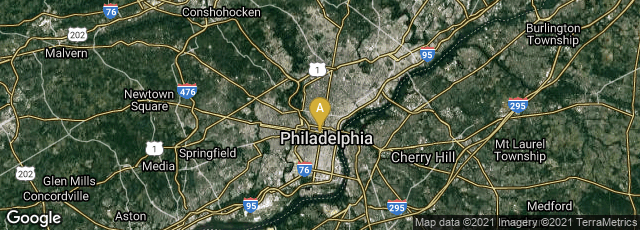In 1858 Edward Young of Philadelphia published
Edwin Troxell Freedley's Philadelphia and its manufactures: A hand-book exhibiting the development, variety, and statistics of the manufacturing industry of Philadelphia in 1857, together with sketches of remarkable manufactories and a list of articles now made in Philadelphia. This 490-page book included an extensive account on pp. 149-185 of the history of the printing, book production and publishing industries in Philadelphia, including details of the companies involved, and the volume of business done. Because Philadelphia was then probably the leading, or second leading, center of printing and book production in America—in competition for leadership only with New York City—the survey of the printing and book production industries provided by Freedley is a significant source of data for American mid-19th century book and printing history.
Freedley stated that the total value of books published in Philadelphia anually was $3,690,000. Among the useful details he provides was that medical book printing and publishing in Philadelphia then represented nine-tenths of the total medical book production in the United States (p. 159).
On p. 182 Freedley surveyed the lithography business in Philadelphia. Next to that page chromolithographer Peter Duval of
P.S. Duval & Son paid for the insertion of a color lithographed ad for his business. This ad dramatically stands out in a book otherwise illustrated with only black & white images.
On p. 185, in summation of his account of book production in Philadelphia (including newspapers, etc.), Freedley provided statistics of the volume of business involved, breaking it down by production category:
Type-Metal, Type Found and Stereotyping $ 650,000
Printing–Book and Job (including Fancy printing) 1,183,000
Printing Inks 160,000
Paper 1,250,000
Book-Binding, including Blank Books and Marble Paper 1,230,000
Engraving–Wood and Steel, and Lithography 570,000
Maps 400,000
Fancy Stationery and Envelopes 150,000
Total $5,593,000
This volume of business reflected the prominence of the book and printing industry in Philadelphia at the time, but it remained a fairly small percentage of overall annual manufacturing in Philadelphia and environs, which totalled $171,843,738 and employed 132,000 people. According to Freedley, the largest industry in Philadelphia at the time was "Cotton and woolen Goods, exclusive of Hosiery, Carpeting, &c.: $14,813,968."
My copy of Freedley's book contains an 8-page insert reprinted from the
Philadelphia Public Ledger newspaper before its title page.That insert, published by the Philadelphia Board of Trade, is a review of Freedley's book, and was intended as "copy" for newspapers and magazines to reprint or otherwise use in articles concerning and promoting business in Philadelphia.
